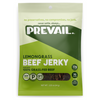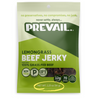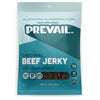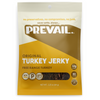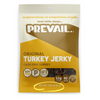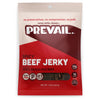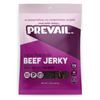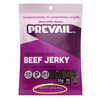How To Avoid Food Allergies With A Soy-Free Diet

If you have a soy allergy, it is important to be aware of the foods that contain soy. Today, a lot of processed foods contain hidden soy, so it can be difficult to avoid.
However, many people allergic to soy don't understand how to identify such foods beforehand. And overtime, this turns out to be a serious health problem. There are many common types of soy-free foods available, and it's important to know which ones to avoid and which to eat.
In this blog post, we will discuss the different types of soy-free foods and how to identify them on food labels. We will also provide some tips for avoiding soy-free foods when you are out dining or travelling. Most importantly, we will provide good substitutes that can replace foods high in soy. Ensure to read on and get healthy tips from this blog post.
What Are Soy Allergies?
Soy is a food product that is made from soybeans and can be used as an ingredient in foods, such as tofu and soy milk. Soy is also commonly used in the production of many processed foods. Nowadays, it is important to know if your food contains soy. This is because soy allergy is one of the most common food allergies and around 0.3% of the general population suffer from soy-induced allergies.
So how do soy allergies happen? Well, soy allergies occurs when our immune systems mistakenly identifies soy proteins as harmful invaders and develops antibodies to fight against them. This forces the body to release histamine which in turn causes you to experience allergic symptoms.

Soy allergy is often confused with soy intolerance because the symptoms can be similar. However, an allergy involves a reaction by your immune system whereas soy intolerance does not involve any immunological response.
The severity of soy allergies varies from one person to another: some people are very sensitive and only need a small amount of soy to experience a reaction, while others can tolerate small amounts without any problems.
Symptoms Of Soy Allergies
Soy allergies are the most common food allergy in infants and children. The symptoms of a soy allergy can vary from person to person, but some common symptoms include:
- Hives
- Itching
- Eczema
- Swollen lips or tongue
- Shortness of breath
- Chest tightness or pain
- Nausea or vomiting
- Diarrhea
- Anaphylaxis (a severe allergic reaction that can be life-threatening)
If you experience any of these symptoms after eating soy-containing foods, seek medical help immediately.
Are There Soy Allergy Diets?
There is no such thing as a "soy allergy diet" instead there are ways to avoid eating soy-rich foods. To keep a soy-free diet, eat foods that contain little or no amount of soy in them.
You may be wondering how possible it is to stay completely soy-free or avoid eating foods rich in soy. Well, the truth is that it takes a great deal of care and dedication. In the coming sections, we will discuss productive and effective ways of staying soy-free and better alternatives to soy foods.
Is Allergy Product Labelling Mandatory?

To avoid soy in foods and beverages, you will need to read the product labels. In most cases, if a food contains soy or any of its derivatives such as lecithin; it will be labeled as containing "soy" or "soya". However, some products may not list soy on their label but may still contain soy protein.
Food manufacturers are required to list any of the top eight allergens on their product labels. The eight allergens that must be listed are milk, eggs, peanuts, tree nuts, wheat, soybeans, shellfish, and fish. If a product contains one or more of these allergens, the label must list it.
Asides from this, The Food Allergen Labeling and Consumer Protection Act of 2004 (FALCPA) also requires that all manufacturers must list the most-common eight allergens on their product list. This law applies to any packaged food regulated by the FDA, which includes most foods sold in supermarkets and convenience stores.
You should note that FALCPA does not apply to restaurants, schools, or other institutions. However, many restaurants voluntarily provide allergen information on their menus so that customers can be aware.
Also, you should be careful about what you eat when you travel out of the country. In some countries, due to a lack of regulations, soy may not be listed on the label. In these cases, you will need to contact the food manufacturer and inquire about whether or not their product contains soy.
If you are uncertain about any ingredients or want more clarification, but you cannot reach the food or product manufacturer for some reason, you can always check out our blog posts for the most updated information on healthy foods.
Foods Containing Soy

So, what are some common foods that contain soy? Soy can be found in many processed foods including meat substitutes, salad dressings, soups, and sauces. It is also present in a variety of legumes such as black beans, kidney beans, lentils, and peas.
Additionally, soybean oil is a common ingredient in many packaged foods. It is generally used as a frying oil or in baked goods. Some people also use soybean oil to cook at home.
If you are trying to avoid soy, it is important to read the labels of all the foods that you eat. Below we have compiled a list of some common food items that contain soy:
- Processed Meats: hot dogs, sausages, bacon, etc.
- Salad Dressings: ranch dressing, Thousand Island dressing, French dressing, etc.
- Soups: chicken noodle soup, minestrone soup, tomato soup, etc.
- Sauces: soy sauce, teriyaki sauce, BBQ sauce, etc.
- Legumes: black beans, kidney beans, lentils, peas, etc.
- Soy Oil: generally used as a frying oil or in baked goods
- Baked Goods: soy flour, bread, pastries, cookies, cakes, etc.

Also, you should look out for soy ingredients in case you don't see any of the common soy allergens. These ingredients are often used in processed foods. Soy can be hidden under many names on labels, which makes it even more difficult to detect soy-free products. Some of the common soy ingredients include:
- Hydrolyzed Soy Protein (HSP)
- hydrolyzed Vegetable Protein
- Mono-diglycerides and diglycerides
- Monosodium Glutamate (MSG)
- Textured Vegetable Protein (TVP)
- Plant Sterols/Stanols
- Stabilizer
- Thickener
- Guar Gum
- Gum Arabic
- Soy lecithin
- Soy Fiber
- Vitamin E (usually listed as “Mixed Tocopherols” or “Tocopherols”)
- Vegetable Shortening
If you see any of these ingredients on your food product, it is likely to contain soy.
PALEO Alternatives To Soy Sauce
In search for a soy free, gluten free and PALEO alternative to soy sauce? Then we recommend Coconut Aminos. Coconut aminos are made with 100% organic ingredients and contain no soy or wheat. They are also GMO free and gluten free certified.
Coconut aminos have a delicious salty-sweet flavor that is perfect for adding to Asian dishes, marinades, and salad dressings. Try it today and see how it can add a depth of flavor to your favorite recipes!
Prevail Beef Jerky

If you are looking for soy free snacks because of allergies or dietary restrictions, Prevail Beef Jerky is the ultimate option. Our jerky is made with only the finest cuts of meat and contains no soy or gluten. In addition, our products are free from hormones, nitrates, and artificial flavors or preservatives.
Here are some cool facts about our jerky:
- Our jerky doesn't contain any of the top 8 food allergens.
- PREVAIL jerky is made with marinades & spices that are 100% organic and made with 100% grass-fed, grass-finished non-GMO beef.
- All of our jerky is made locally in Springfield, IL. Our product is the first product run in the morning after the strict HACCP level cleaning the night before to ensure that there is no cross-contamination.
- We use coconut sugar and salts to help cure the meat and then smoke it with Cherry Wood to naturally preserve it (the natural smoke also happens to add tons of flavor). So this means our jerky is free from preservatives and additives!
- Our jerky is certified gluten-free with The Gluten-Free Manufacturing Program (GFMP), endorsed by the National Celiac Association.
Prevail Beef Jerky makes a great snack for people on the go, and it’s perfect for those who want to stick to a healthy diet while avoiding allergens. Visit our website today to order your favorite flavor of soy free beef jerky!
Conclusion
Soy is a common allergen, and it’s important to be aware of the foods that contain soy. By avoiding soy-rich foods, you can reduce your risk of an allergic reaction. Remember, if you are unsure about whether or not a food contains soy, always check the ingredients list before eating.
if you have any questions or concerns, speak with your doctor or allergist. Also, when you want to get the best health-conscious snacks don't hesitate to check our delicious jerky. Thank you for reading! We hope this article was helpful. Have a great day!


